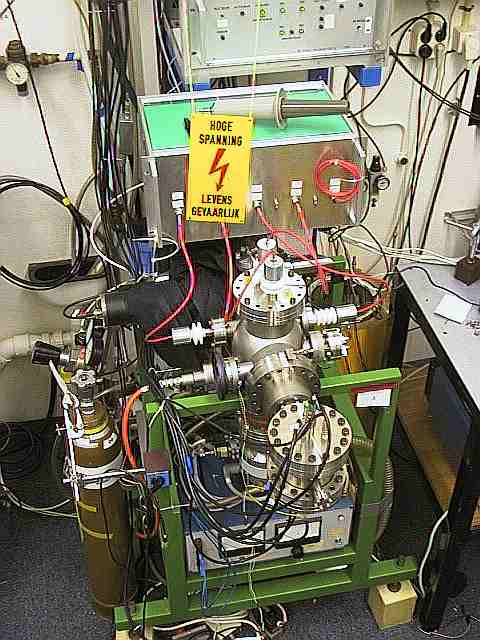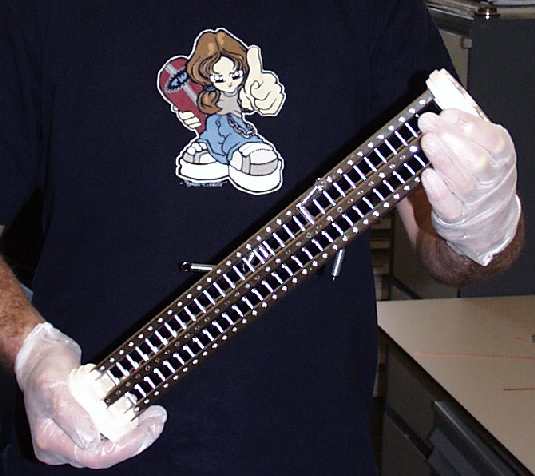
 This webpage shows the status of the cold molecules project in January 2001, and will not be updated anymore. Please have a look at the Links which you can find at the end of this page.
This webpage shows the status of the cold molecules project in January 2001, and will not be updated anymore. Please have a look at the Links which you can find at the end of this page.
There is an alternative method to slow down molecules, based on the interaction of a dipolar molecule with electric fields. Molecules possessing an electric dipole moment will gain energy upon entering an electric field when in an appropriate quantum state. This gain in Stark-energy (`potential' energy) is compensated by a loss in kinetic energy. If the electric field is switched off before the molecule has left the electric field the molecule will not regain the lost kinetic energy. By letting the molecules pass through multiple pulsed electric fields they can thus be slowed down and brought to a standstill.
In our article "Decelerating neutral dipolar molecules" we report on the succesful implementation of a version of the Stark-decelerator to produce an intense pulsed beam of slow neutral metastable CO molecules. A pulsed beam of neutral metastable CO molecules is slowed down from 225 m/s (E_{kin}=59 cm-1) to 98 m/s (E_{kin}=11 cm-1) upon passage through an array of 63 synchronously pulsed electric field stages.
In our article "Trapping Neutral Molecules in a Traveling Potential Well" we report that a series of pulsed electric fields can be arranged such that it creates a traveling potential well in which neutral dipolar molecules can be confined. This provides a method to transport, to decelerate, and to cool a sample of neutral molecules while maintaining the initial phase-space density. This method is described using the concept of phase stability. The oscillating motion of molecules in the traveling potential well, reaching a minimum velocity spread corresponding to a translational temperature of 4 mK, is experimentally observed.
In our article "Electrostatic trapping of ammonia molecules" we report on the
slowing of an adiabatically cooled beam of deuterated ammonia molecules and
subsequent loading into an electrostatic trap.

